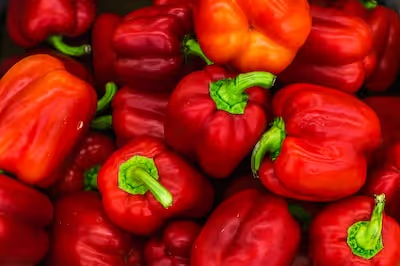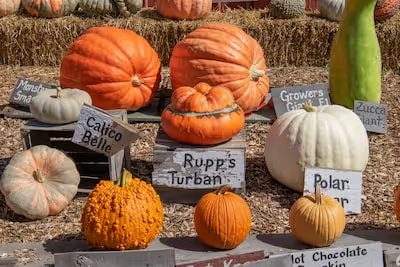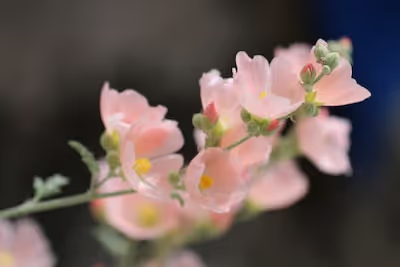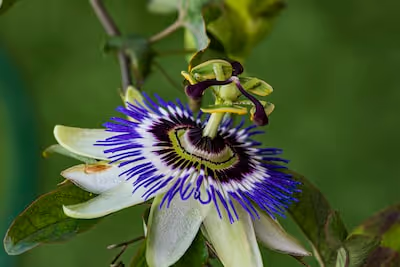Growing Leeks: A Simple Guide to Planting and Care
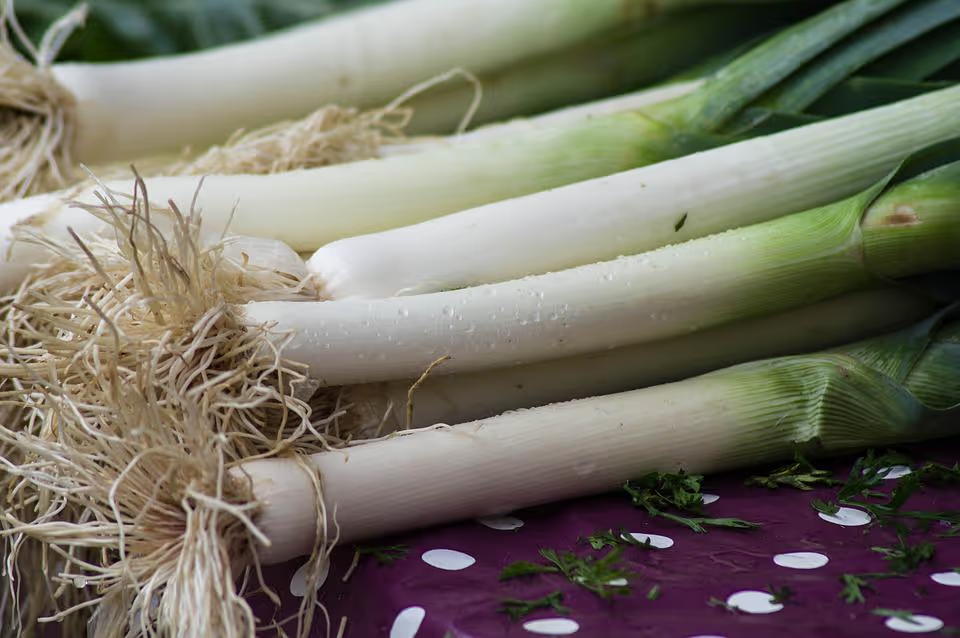
Growing Leeks
Growing leeks rewards patience and a good sense of timing. Start seeds indoors 8–10 weeks before the last spring frost, plant seedlings deep to encourage tender, white stems, and space them 6 inches apart for optimal growth. Mastering leek planting skills adds flavorful depth to your cooking—read on to cultivate your own gourmet harvest.
Cheatsheet: Plant, Grow & Harvest Perfect Leeks
🌱 Start Indoors (Late Winter)
- Seed 8-10 weeks before last frost
- Preferred soil temp: 70°F / 21°C
- Use shallow trays; sow ½ in/1.5 cm deep
- Transplant after frost risk passes
🌤️ Outdoor Planting
- Rows: 12 in/30 cm apart
- Plants: 6 in/15 cm apart
- Trench: 4-6 in/10-15 cm deep for blanching
- Soil: loose, rich, pH 6.2-7.0
- Full sun preferred; partial shade tolerated
🧑🌾 Tools and Products You'll Need
- Leek seeds (Allium ampeloprasum)
- Seed trays or modules
- Quality potting mix
- Garden fork, trowel
- Compost or balanced fertilizer
- Mulch (straw or leaves)
- Watering can or hose
💧 Water & Feed
- Water consistently (1 in/2.5 cm weekly)
- Mulch retains moisture, suppresses weeds
- Feed with nitrogen or compost monthly
🌾 Blanch for Tender Stems
- Draw soil up stems every 2-3 weeks
- Or use tubes/collars for whiter stalks
🌱 Health & Nutrition
- High in vitamin K, A, C
- Supports heart, immune system
- One cup: only 32 calories
⚡ Steps for Success
- Sow seeds indoors 8-10 weeks pre-frost
- Harden off seedlings before transplant
- Transplant to trenches outdoors after frost
- Water well, mulch, and feed monthly
- Hill soil up stems as plants grow
- Harvest when stems are 1 in/2.5 cm thick
🧺 Harvest
- Use fork to lift gently
- Best flavor: cool temps, after first frost
- Store in soil, fridge, or root cellar
🌟 Self-Sufficiency & Stats
- Leeks can store 4+ months after harvest
- 30-40 leeks feed a family for winter soups/stews
-
Why I keep a bed of leeks every year
I keep coming back to Growing Leeks because they stand tall when everything else sulks in the cold. In January soup weather, those blue-green flags feel like a quiet victory.
Leek basics at a glance
- Botany: Allium porrum, a hardy biennial grown as an annual.
- Soil pH: 6.2 to 6.8 for steady growth and mild flavor.
- Timing: 90 to 150 days to harvest, depending on variety and season.
- Spacing: 6 to 8 in apart (15 to 20 cm), rows 12 to 18 in (30 to 45 cm).
- Water: About 1 in per week (25 mm) including rain, more in heat on sandy soils.
Start seeds like a pro
Sow indoors 8 to 12 weeks before your last spring frost, about 0.25 in deep (6 mm), at 65 to 75 F (18 to 24 C). I use open flats and slice seedlings into clumps at transplant time.
Leeks handle crowding early, so I seed thick to save space. Bottom water to keep stems clean and reduce damping-off.
Transplant timing and prep
Move them out when plants are pencil-thick and 6 to 8 in tall (15 to 20 cm), usually 2 to 3 weeks before last frost in spring or late summer for fall crops. Harden off for a week and keep them slightly on the dry side so they don’t flop in wind.
Before planting, I trim roots to 1 in (2.5 cm) and tops to 6 in (15 cm). This makes dibbling easier and reduces transplant shock.
Soil that feeds, drains, and stays loose
Leeks crave deep, friable soil with high organic matter and steady nitrogen. I work in 1 to 2 in (2.5 to 5 cm) of finished compost plus a balanced organic fertilizer at label rate.
If your soil runs acidic, lime ahead of time to hit pH 6.2 to 6.8. A simple soil test pays for itself fast.
Planting methods that make long white shanks
I plant into 6 to 8 in deep trenches (15 to 20 cm), spacing plants 6 to 8 in apart. Use a dibber to poke holes, drop seedlings in, then water the holes so soil slumps around stems without burying leaves.
As plants grow, pull soil or mulch into the trench to blanch the shanks. Collars made from slit paper tubes work too and keep grit out.
Feeding and watering for steady growth
Leeks respond to a light monthly side-dress of nitrogen, like blood meal or fish hydrolysate, during peak growth. I mulch with straw to lock in moisture and keep soil cool.
Hit the 1 in per week water mark (25 mm). In heat waves above 90 F (32 C), I add an extra deep soak to prevent pithy stems.
Blanching techniques compared
- Soil hilling: Cheapest, gives the longest white shanks, slightly grittier if you rush washing.
- Paper or plastic collars: Cleanest harvests, great for wet autumns, shorter blanch length than heavy hilling.
- Deep trench only: Less labor later, solid results, my pick for big plantings.
Cold hardiness and timing by season
Spring-planted leeks carry you into fall, then shrug off light freezes. Overwintering types hold through deep cold with mulch and wind protection.
I plan two sowings: late winter for summer-fall eating, and midsummer for winter harvests. Hardy cultivars keep flavor sweet after frost.
“Leeks are exceptionally hardy and can stand in the ground over winter” — Royal Horticultural Society. I bank straw on mine when nights hit 10 F (-12 C).
Harvest and storage
Pull when shanks reach 1 to 1.5 in thick (2.5 to 4 cm), or earlier for baby leeks. I loosen with a fork to avoid snapping roots.
In the fridge at 32 F (0 C) and very high humidity, leeks store several weeks. USDA postharvest guidance notes best keeping near 95 to 100 percent relative humidity.
Flavor notes from the field
Cool nights concentrate sugars and give silkier texture. Heat can push a faint bitterness, which eases with steady water and mulch.
I taste a leaf now and then and adjust water or nitrogen. The plant tells you before the calendar does.
Top varieties I rate highly
- Bandit: Very hardy, stocky shanks, superb winter keeper.
- Tadorna: Reliable, upright habit, easy to clean at harvest.
- Bleu de Solaise: Blue foliage, stellar flavor after frost, photogenic rows.
- King Richard: Fast and tall for early harvests, less hardy, pristine white shafts.
- Porbella: Uniform and tidy, great for market bundles.
- Musselburgh: Classic heirloom, forgiving in mixed soils.
- Below Zero or Northern Lights types: Bred for serious cold, slow to bolt in spring.
Common problems and fixes
- Onion thrips: Silvery streaks and clubby leaves. Use reflective mulch, reduce dusty overhead watering, and apply spinosad or insecticidal soap in the evening.
- Leek moth and allium leaf miner: Time your floating row cover right after transplanting and seal edges well. Remove and destroy mined leaves.
- Rust (Puccinia): Orange pustules on leaves in late season humidity. Space well, water at soil level, and choose tolerant varieties.
- White rot: Patchy collapse with fuzzy white mycelium and black sclerotia. Pull and bin affected plants, rotate away from alliums for 4 to 8 years.
My field notes on spacing and yield
For fat, plate-ready shanks, I use 6 in spacing (15 cm); for baby leeks, I crowd at 3 to 4 in (8 to 10 cm). Tighter spacing means more pieces, wider spacing means bigger singles.
A 10 ft row (3 m) gives plenty for a household all winter. I replant that row every two weeks in spring for a long picking window.
Organic nutrition plan that works
Pre-plant: compost plus an organic base fertilizer. In-season: two to three light side-dressings at 4 to 6 week intervals and a kelp drench before heat spells.
If growth stalls midseason, a soluble fish feed perks leaves in three days. Overfeeding can split shanks, so I go light and steady.
Container and small-space tips
Use a 10 to 12 in deep box (25 to 30 cm) and a peat-free mix cut with 20 percent compost and 10 percent sand. Plant tight and collar early since you cannot hill much in pots.
Mulch with fine bark to keep media cool. Water daily in high summer and feed every 14 days with a half-strength liquid feed.
Regrowing grocery leeks
You can root the basal plate in water, then pot into soil for greens and small shanks. It buys a few weeks of harvest but lacks the vigor of seed-grown plants.
For dependable results, start from seed or high-quality plugs. Grocery leeks were bred for uniform shelf produce, not transplant resilience.
Companions and rotation
I pair leeks with carrots and beets, and I avoid beds that housed onions or garlic last year. Alliums share pests and diseases, so rotate 3 to 4 years if you can.
Short lettuce between rows pays rent early, then vacates before hilling. Low, quick crops keep soil shaded and moist for the leeks.
Soil moisture hack in heat
I run a drip line at 0.5 gph emitters (2 lph) every 12 in. A two-hour soak twice weekly holds moisture in the root zone and keeps leaves cleaner than overhead sprays.
On sand, I add biochar pre-season for better water holding. It pairs nicely with compost and does not sour the pH if you buffer it first.
What to buy: tools and supplies that actually help
- Dibbler with a 1 to 1.5 in tip (2.5 to 4 cm) for clean, deep holes in trench bottoms.
- Floating row cover at 0.5 oz fabric for pest exclusion without heat stress.
- Soil test kit that reports pH and nitrate. Calibrate your feeding to data, not vibes.
- Paper collar sleeves or slit tubes for fast blanching in tight beds.
- LED seed-starting lights with a simple timer. Leeks do fine at 200 to 300 PPFD.
Commercial questions gardeners ask
- Seed or plugs: Plugs cost more but shave 8 to 10 weeks of indoor work and give uniform rows for market harvest.
- Organic vs conventional seed: I see stronger seedling vigor in fresh lots regardless of certification. Check the pack date.
- Fertilizer label to watch: Look for slow-release N in the 4 to 6 percent range for base feeding, then supplement as needed.
- Mulch options: Clean straw is easiest to rake back at harvest; leaf mold can stick grit in tight sheaths if applied late.
Season extension tricks
In cold snaps below 10 F (-12 C), I hoop and cover, then bury the edges with soil. I harvest through snow with a narrow trench cut to the row.
In long wet spells, collars beat hilling because they shed grit. Clean leeks sell faster and wash quicker.
Leeks vs onions vs scallions
- Leeks: Long season, cold hardy, mild sweetness, white shaft prized for cooking.
- Bulbing onions: Shorter season options exist, less cold tolerant in ground, storage king if cured right.
- Scallions: Fast, compact, repeat sow every 2 to 3 weeks, best for stir-fries and raw crunch.
Reliable facts worth quoting
“Aim for 1 inch of water per week” is the standard recommendation from multiple U.S. extension services for leeks and onions, adjusted for rainfall and soil type.
USDA postharvest guidance recommends 32 F (0 C) and 95 to 100 percent relative humidity for storing leafy alliums like leeks for the longest life.
The Royal Horticultural Society notes that hardy leek cultivars can remain in the ground through winter and improve in flavor after frosts.
Two-sentence troubleshooting
Browning leaf tips usually point to drought or salt buildup, so flush the bed and resume deep, less frequent watering. Pale growth with lush leaves and skinny shanks suggests too little light or too much nitrogen too early.
Bulbous bases and early seed stalks show heat or daylength stress, which hits early varieties in late spring. Switch to overwintering types and sow later.
Anecdotes from rough seasons
One hot year I laid a 1 in layer of compost as a midseason blanket and the leeks stayed sweet through August at 95 F (35 C). Another fall a dusting of wood ash after rain kick-started growth on a tired bed and raised pH just enough.
I have pulled leeks from frozen soil with a digging bar, boiled them with potatoes, and thanked past me for trenching deep. That flavor after frost carries a whisper of the field.
Frequently Asked Questions about Growing Leeks
What is the ideal time to sow leek seeds?
Begin sowing leek seeds indoors about 8 to 10 weeks before the last expected spring frost. Transplant seedlings outdoors once daytime temperatures settle consistently above 45°F (7°C).
How deep and far apart should I position leek seedlings?
Plant leek seedlings into holes approximately 6 inches (15 cm) deep, spacing each plant about 6 to 8 inches (15 to 20 cm) apart. Rows thrive at distances of roughly 12 to 18 inches (30 to 45 cm).
What kind of sunlight do leeks require for optimal growth?
Leeks flourish under consistent, full sun exposure—at least 6 to 8 hours of direct sunlight each day. A spot with ample sunlight ensures vigorous growth and robust stalk development.
How often should leeks be watered?
Provide regular watering to maintain soil that stays consistently moist but not waterlogged. Typically, watering once or twice per week, giving approximately 1 inch (2.5 cm) of water weekly, works effectively. Adjust frequency according to hot or dry weather conditions.
Which type of soil is best suited to growing leeks?
Leeks prefer well-drained soil rich in organic matter with a slightly acidic to neutral pH between 6.0 and 7.0. Loamy soils amended generously with compost yield excellent results.
When and how should I harvest my homegrown leeks?
Harvest begins when leek stalks reach a diameter of around 1 inch (2.5 cm). Loosen the soil gently with a fork or spade, then carefully pull stalks upward. Leeks harvested after mild frosts provide richer flavor and subtle sweetness.
Can leeks endure colder temperatures?
Yes, leeks withstand colder climates well and even gain flavor after a light frost. While hardy varieties survive temperatures down to 20°F (-7°C), prolonged hard freezes below these temperatures may require extra protection like mulch or row covers.
Growing leeks isn’t fussy—just patience, attention, and a bit of dirt under your nails. Start with rich, loose soil and keep those young shoots well-watered. Trenching and mulching give you those long, white stems chefs dream of. Feed them a little, weed them often, and don’t forget to blanch if you want the sweetest flavor. Harvest when the stems are thick and sturdy—don’t wait too long, or the taste gets tough. Growing leeks rewards you with a harvest that brings slow-cooked stews and crisp autumn air straight to your table. Looking for other crops to add to your beds? Try garlic or chives—they’re classic companions, and just as easy to grow.
The Homesteader's Approach to Leek Self-Sufficiency
Leeks and Sustainable Nutrition
Leeks offer vitamin K, folate, and manganese, aiding immune support and maintaining bone density. Regular harvesting ensures steady fresh nutrient supply from your garden year-round.
Extending Your Harvest
- Succession planting: Plant leek seedlings every 3 weeks from early spring until midsummer for continuous harvests.
- Winter storage: Leave leeks in-ground through winter, mulched heavily with straw or leaves. They remain edible to -5°F (-20°C).
- Seed Saving: Let a few select plants bloom in their second season. Collect seeds once heads turn brown to sustain future plantings without additional cost.
Homesteader's Companion Crops for Leeks
- Carrots: Repel leek moths naturally, boosting leek crop health.
- Celery: Attracts beneficial insects, reducing pest populations.
- Beets: Optimize soil nutrients through different root depths, improving leek yield.
Preserving Excess Leeks
- Dehydrating: Slice thin, dry fully at 135°F (57°C), store airtight. Rehydrate in soups later.
- Quick freezing: Chop, blanch 2 minutes, freeze in portioned bags for easy cooking.
- Fermenting: Slice finely, pack in salt brine (2% solution), ferment 7–14 days at room temp. Adds probiotic-rich food source for winter.
Find out which plants will thrive in your garden!
Answer a few fun questions and get custom plant recommendations perfect for your space. Let’s grow something amazing together!

start your season

